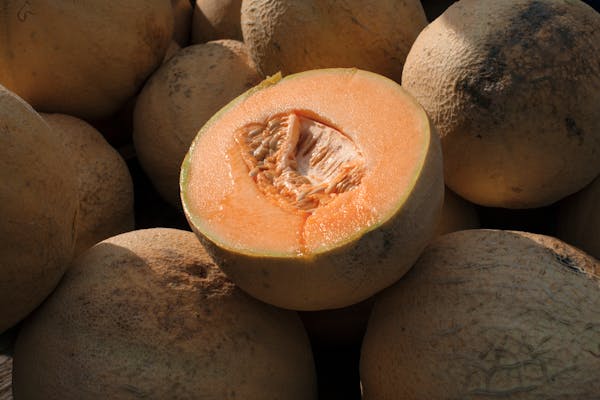A 13-month-old boy spent more than three days in the hospital after eating his favorite fruit: cantaloupe.
His mother wants the importer and the retailer to pay.
"He developed a fever, vomiting and bloody diarrhea among other symptoms," reads a federal lawsuit filed in Florida last week that charges produce company Trufresh with "failing to prevent fecal matter and other contaminants from coming into contact with the cantaloupe and other food products," among other issues.
It's the first lawsuit to come from the tainted-cantaloupe salmonella outbreak that has killed three people in the U.S., two of them in Minnesota, as well as five people in Canada. The suit arrives as the number of confirmed cases has doubled nationwide in a week.
As public health investigators continue to find more cases and trace the outbreak to its origin, Jasmin Long in Florida is joining the quest to get some answers for her son.
"More often than not when people contact us it's not about the money, it's about accountability — for companies to choose safety over profit next time," said Raymond Trueblood, an attorney with Minneapolis-based Pritzker Hageman who brought the case in Florida.
The suit seeks unspecified damages from Arizona-based Trufresh, which said in a statement that "due to pending litigation, we cannot comment directly on the recall."
"Our hearts go out to anyone affected by the outbreak. We realize that no words will be of comfort to the people and their families who have felt its greatest impact," the company said. "We continue to work with our supplier and health authorities to investigate how the contamination may have happened."
The lawsuit also names Sam's Club as a defendant. The retailer said in a statement it "will respond appropriately with the court once we are served with the complaint."
"Our thoughts go out to the Long family and their son, and we hope he makes a full recovery," spokesperson Kelly Hellbusch said. "We are committed to our customers' safety and take food safety incidents like this seriously. We continue to monitor this product recall, which has not affected Sam's Club."
Since the outbreak was declared in early November, at least 230 people have been sickened by salmonella, according to the Centers for Disease Control and Prevention.
That's just cases confirmed through Nov. 20. The CDC expects far more illnesses have occurred that will not be reported because some people are able to recover without medical intervention.
"For every case of salmonella illness confirmed by laboratory tests, almost 30 other cases are not reported," the CDC says. That's an estimated 6,900 people with food poisoning due to cantaloupes in at least 38 states.
For some, salmonella infections can have life-altering consequences, Trueblood said.
Unknown outbreak source
Public health authorities know that cantaloupes grown in Mexico and imported by Arizona-based Trufresh under the Malichita and Rudy brands are linked to the outbreak, but it is not clear when salmonella contamination occurred and spread.
"Clearly there was a breakdown in the process somewhere," Trueblood said. "So often, as disgusting as it sounds, ultimately the case is feces in our food."
That could be from cantaloupe fields near livestock operations that seep into irrigation water. A report from the Environmental Working Group last week found a number of domestic cantaloupe fields neighboring feedlots.
"The risk of contamination to food grown in the U.S. will continue unless farmers face more stringent regulations to conduct tests of their water, management of manure from industrial agriculture is more rigorously monitored and the FDA enforces its regulations more aggressively," the advocacy group wrote.
The outbreak could have been caused by unsanitary conditions elsewhere in the supply chain between shipping, packing, processing and selling the melons. Many packages of cut cantaloupe have been recalled in addition to whole melons.
Cantaloupe is particularly hard to clean given its rough rind, and salmonella spreads easily in the fields or in warehouses. The same issue applies to romaine lettuce.
"It's one of the ironies of these foodborne outbreaks," Trueblood said, "that it's so often the foods we consider the healthiest — foods without a 'kill step,'" a term used for cooking or pasteurization methods that kill harmful pathogens.
Seattle food safety attorney Bill Marler said government regulators are focused on identifying and halting outbreaks rather than preventing them, which is why cantaloupe continues to be a leading cause of foodborne illness.
"When you have a problem with cantaloupe over a long period of time — whether imported or domestically grown — that begs the question of what is the government doing to protect not only consumers but the industry from itself," Marler said.
Bringing back the Microbiological Data Program — which the U.S. Department of Agriculture ran from 2001 to 2012 to test for pathogens in produce — would help identify problems before people get sick, he said.
"The problem is not insoluble," he said, pointing to E. coli outbreaks tied to hamburger that have largely faded because of improved testing. "It's just a matter of political will."
